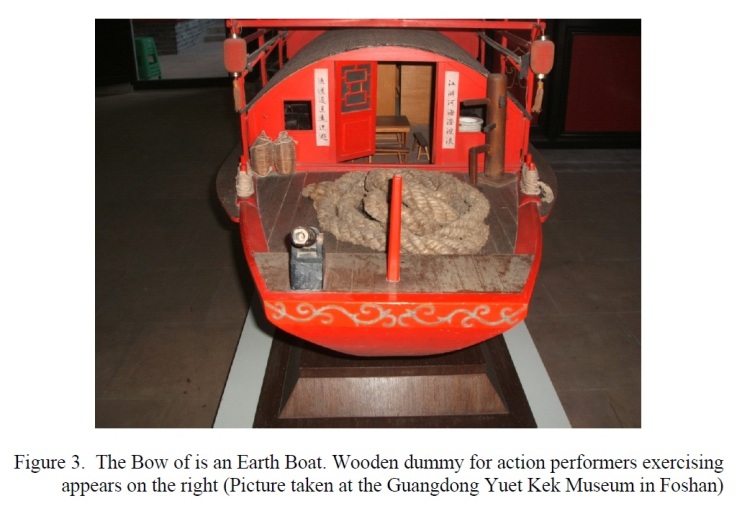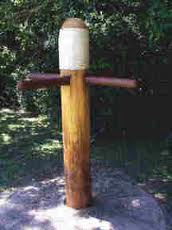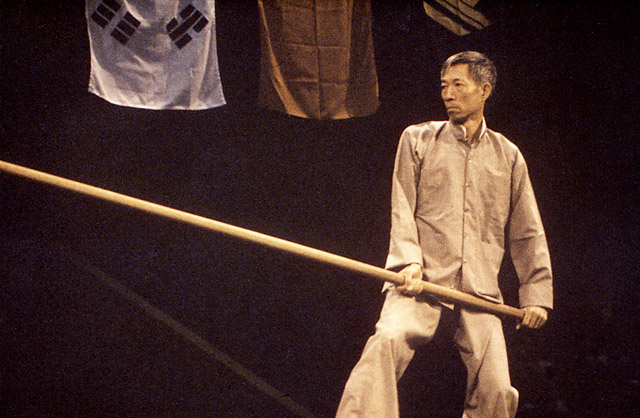Introduction
I have been working on a couple of projects that have taken me away from the blog over the last couple of weeks. One of the more challenging of these has been a review David Faure’s very detailed writings on the evolution of key institutions that define what we tend to think of as “typical” southern Chinese life. These include such foundational elements as the spread of the state’s influence throughout society, the evolution of Cantonese identity, the creation of the area’s pervasive lineage structures and the rise of the southern gentry.
None of this has much to do with the martial arts, at least not directly. Yet the threat of violence pervades Faure’s story. Pirates lurk in the waters, violent lineage feuds are distressingly common and both landlords and marketplace organizers “hire” huge amounts of private security (though it is not always possible to detect where legitimate security ends and the protection rackets begin). Social violence (including the martial arts) haunts his work. Often it becomes an engine for institutional innovation. Yet David Faure (Department of History, The Chinese University of Hong Kong) is usually much more interested in explaining how these groups were organized, financed and integrated into society than the technical details of how they plied their trades.
These are all critical questions. The martial arts have always existed as an expression of currents and institutions within Chinese popular culture. While practitioners tend to think of these things as primarily systems of fighting techniques, or even philosophies, from the perspective of Chinese martial studies it usually makes more sense to conceptualize them as social institutions. Their existence is a function of the sorts of relationships that exist between the much larger networks of lineage associations, pawnshops, security companies, secret societies, tax farming companies and government offices (among other potential employers) that generate the demand for their services. As these more fundamental social structures evolve, the martial arts are forced to change.
This is an important point to emphasize as casual readers often underestimate just how much evolution was actually happening in southern China over the course of the late imperial period. In one of his more important works (at least for those of us trying to understand the martial arts) titled Emperor and Ancestor: State and Lineage in South China (Stanford UP, 2007) David Faure traces the evolution of such basic social institutions as lineages, corporate property ownership and the emergence of a local gentry in painstaking detail through his study of genealogical and family documents dating from the 15th-19th centuries.
Orientalist assumptions about the “ancient and unchanging” nature of China notwithstanding, Faure demonstrates that each of these categories was fundamentally transformed over the course of the late imperial period. The social life (and even the typography) of southern China in the early Ming would have been unrecognizable to a resident of the same area in the late 19th century. Much of what we think of as “traditional” southern Chinese life really only gels and comes together in a recognizable form in the 18th century.
Faure brings substantial documentary evidence to bear on these questions. Nor does he shy away from attacking or reevaluating much of prior academic literature on the region. His work engaged directly with the likes of Diane Murray, Maurice Freedman (perhaps the best known student of the lineage system in southern China) and Fredrick Wakeman Jr. (whose works on political history and conflict have been invaluable to those trying to understand the problem of social violence in southern China).
Faure’s critiques demand a substantial reevaluation of Freeman’s work yet he often seems to support Murray’s findings. His engagement with Wakeman is perhaps the most critical issue for students of martial arts studies. Yet in a number of cases I am not convinced that his broad reading of events is all that different from his predecessor’s. Of course with my own background being in political economy, I have to admit that his presentation of the institutional micro-foundations behind these clashes is pretty compelling.
This is also the reason why I haven’t really been writing about Faure. His work demands a close reading that students of social life in southern China will love, but those of us primarily interested in martial arts are likely to find it to be impenetrable. A careful review of his various debates with Wakeman might be more interesting for students of martial arts history. Yet it would also take more time to pull together than I have this evening. That will have to wait for another post.
Instead I would like to look at three insights that emerged during Faure’s description of Guangdong province’s growing economic prosperity in the late 18th and early 19th centuries. Each of them opens a space to better understand the world that southern China’s martial artists inhabited. Taken together they remind us that it is probably pointless to research the social history of individual practitioners or styles without also striving to continually update our understanding of the world that these actors were embedded in.
Foot Binding in Southern China
Gender is a popular topic in discussions of Chinese martial studies. It can be addressed from various perspectives ranging from the purely historical to the highly theoretical. Over the years the southern Chinese martial arts have created large numbers of mythic female heroines. They can be found in operas, films, novels and style creation myths. Yet martial arts historians are quick to remind us that in reality very few females ever practiced boxing.
Period accounts would seem to confirm this, and the lack of female participation is theoretically overdetermined. Everything from the economic functions of the martial arts to the existence of strong taboos against mixed-gender association would have made this difficult. The practice of foot binding is also frequently noted as an explanation of female exclusion.
How realistic is this last reason? While a few female martial artists did exist, we know that they were relatively rare. How much of a role did the practice of foot binding play in this?
Early western observers of life in Southern China were fascinated by this topic and often included descriptions of women with tiny feet in their accounts. Indeed, artist and social critics alike reproduced the image of bound feet. Nathan Dunn made sure to include multiple pairs of diminutive women’s shoes in his famous Chinese Museum.
Nevertheless, this is one area where we need to be careful about putting too much emphasis on contemporary western accounts. Very few European or American visitors were allowed to venture far from their factories in Canton during the early 19th century. As such they didn’t really have much of an opportunity to observe how most of the women of the region went about their daily business.
The first thing that we need to bear in mind is that while foot binding was practiced in the Pearl River Delta, it was not universal. Women from the Hakka, Manchu and Tanka groups never bound their feet. Nor does it appear that the habit was as strictly practiced among Cantonese women in the second half of the 18th century and early 19th century as one might suppose.
While discussing the growing economic prosperity of the population of the Pearl River Delta region during this period, Faure turns to eyewitness accounts left by Zhang Qu, the provincial surveillance commissioner. In a work titled “Seen and Heard in Guangdong” (Yuedong Wenjian Lu, 1738) Zhang makes a number of important observations.
He notes that in absolute terms the majority of women in Guangdong did not bind their feet. This practice seemed to be restricted to women from the better families of the region. But even then foot binding generally did not begin until the girl was already about 12 years old. Zhang noted that while men tended to wear shoes, most women went barefoot. While they often owned shoes they carried them as an accessory in their sleeves and only put them on when entering a friend’s or neighbor’s home. Lower status women, such as servants, tended to go barefoot at all times, even when traveling to the market.
It would be interesting to look for some other accounts to collaborate this report. But if Zhang’s report is to be believed it suggests that the practice of foot binding was probably not a key critical factor in keeping women out of the martial arts. Other rules of social propriety were probably much more influential. Further, female boxers such as Fei Ching Po, probably didn’t have to worry about foot binding at all due to their social background and generally low social status.
Printing and the Commercialization of the Southern Chinese Martial Arts
In two prior posts (see here and here) we have encountered western descriptions of the production and sale of printed martial arts training manuals in the marketplaces of the Pearl River Delta region during the early and middle parts of the 19th century. These works were very simple and included crude wooden block illustrations along with short descriptions of movements or strength training exercises. They were also quite inexpensive and appear to have been a popular genera of ephemera.
In this case we are very much in the debt of these early western accounts as I am not aware of any surviving examples of this once thriving trade. Of course that has always been the problem with ephemera. Cheaply printed chapbooks and almanacs conveyed much of an era’s popular culture in both the East and West, yet it is always surprising how few of these works remain.
Still, if we wish to better understand the few accounts of these early predecessors of modern manuals that have come down to us, we need to know a little bit more about the publishing industry that created and sold them. Only then can we start to make some guesses about the function of this sort of material in local popular culture.
Unsurprisingly the fortunes of Guangdong’s publishing industry closely followed the rapid economic rise of the region which occurred in the closing decades of the 18th century, and the first years of the 19th. Prior to this boom there had been very little book publishing in the region. Scholars had produced and distributed works as written manuscripts, and it is known that a reading public existed. Yet the wooden printing blocks that the area produced cheaply in the middle of the 18th century were often shipped to other cities (such as Nanjing) where the actual publishing and marketing of the books happened.
Yet by the first decade of the 19th century the area suddenly had a thriving publishing industry which was producing a large number of works for a reading public that encompassed a great many levels of education and interest. Academic works and collections of poetry were plentiful, but increasingly bookstores began to carry cheaply produced mass market works including religious texts, story-telling scripts, and collections of songs. Of course boxing primers were also on offer.
Faure points out that much of this material was closely related to the vernacular performance traditions that later came to be known as “Cantonese Opera” (another subject of much interest to students of the region’s martial arts). In fact, this cheaply produced literature was notable for the degree to which it incorporated local dialect terms into a more recognizable classical framework. Hand copied texts remained popular, but it is hard to underestimate how important the development of the local printing industry was to the creation of a robust sense of regional identity.
Mirroring some of the arguments that Benedict Anderson made elsewhere, Ching May-bo has asserted that it was the emergence of this printed vernacular (designed to feed growing market demand) coupled with certain intellectual trends among local elites that created the “Cantonese identity” in the first two decades of the 19th century.
Local pride and identity has always been a central feature of the area’s martial arts. As such it is fascinating to realize that the very first printed southern Chinese martial arts manuals were being produced as part of the wave of popular literature that strengthened and gave birth to the region’s Cantonese culture. This discovery once again illustrates how central Chinese martial studies can be to gaining a better understanding of the fundamental structure of social life.
Foshan: A Trip to the Market
Very often discussions of the “commercialization” of the traditional Asian martial arts place this development in the recent past, often tying it to the process of the globalization and cultural appropriation. But as the foregoing discussion suggests, the commodification of the martial arts far predates the internet, Bruce Lee or the Vietnam War.
It is clear that the growth of economic markets promoted certain sorts of developments within the martial arts. The need for large numbers of security personal to safeguard trade and the evolution of a more heavily monetized economy alone can account for a certain amount of change in the sociology of violence. Yet what is really interesting to note is that these growing marketplaces were not just facilitating the practice of the martial arts, rather they were commercializing the image of these fighting systems through the development and spread of popular media.
This sort of commercial exploitation appears to have been baked into the southern fighting arts from the moment of their emergence as a self-conscious social institution. In fact, the emergence of this commercialized discourse on the martial arts appears to be co-constitutive with the formation of location identity itself.
Clearly “the marketplace” needs to be a central actor in our understanding of the emergence of the modern Chinese martial arts. So what did the markets of the Pearl River Delta look like in the late 18th and early 19th century, during the period of rapid economic growth directly prior to the Opium Wars and the Taiping Rebellion?
To borrow a term from Faure, the martial arts, like so much else of the region’s 19th century culture, emerged from an economically driven “culture of consumption” (Faure 249). Luckily students of this region have a handful of interesting descriptions of Foshan, the consummate market town and an incubator for regional martial arts development, which give us some idea of what this culture may have looked like.
One of the many printed works produced during this period was an 1830 walking guide to the market streets of Foshan. The original work was 13 pages long (more a pamphlet than a book) which now survives in only a single known copy held by the British Library. I have already checked and this manuscript is not listed in their electronic catalog. My guess is that not that many scholars have ever worked with it.
David Faure includes a brief overview/translation of the text within his own work. Its description of the richness and vitality of Foshan’s markets is important enough that I am including the entire section below so that readers can get a better idea of the density and sophistication of the commercial world that gave rise to practices like Foshan’s lineages of Wing Chun, Choy Li Fut and Hung Gar.
“Down Odd Street (Qiling jie), for instance, one found the medicinal herbs guild, which sold medicines from Sichuan and Hunan-Hubei. To its west, one passed into Ever-Prosperous Street (Changxing jie), where yarn, lamps, soap, boots, cups and various musical instruments such as the lute and the flute were sold, and to its south there was Woolen Yarn Street, which sold gold thread, flattened, gold-leaf sacrificial paper, used formal gentry dress, and miscellaneous books.
Odd Street was not yet a major business center in Foshan. The main street would seem to have been Prosperity and Office Lane, where there were three hundred shops selling goods from the capital and other provinces; these included jewelers, sellers of books from the lower Yangzi, and sellers of winter hats and furs, sewing needles, and paper items of all sorts, including invitation cards.
For the local products for which Foshan was famous, one went to the Yellow Umbrella Main Street, which had shops selling incense, iron wire and lace hats. This led to High Ground, which sold local silk. Next to the “longevity tablets guildhall”—undoubtedly a local temple at which spirit tablets were deposited—at Wealthy Ward and Morning Market, there were shops selling medicinal powder and rouge. On Prosperity and Peace Street, there were iron foundries and more shops selling pills.
These were only some of the retail shops, for the wholesalers were to be found beyond the stretch leading from the Fen River pier to the Temple of Efficacious Response: high-grade rice shops on White Rice Street, but course rice on Gui County Street; palm-leaf fan shops on Peace Street, tobacco shops on North Street, mat dealers on Old Betel Nut Street, cotton dealers on Bean Paste Street, Fujian paper stores on Prosperity Street, chopsticks, brass water pipers, objects made from buffalo horn, and imported knives on Straight Chopstick Street, and cast iron woks in North Victory Ward.
Near the part of Foshan known as Danjia Sands, one found trades that went with the lower status suggested by the name of the place: coffin shop, timber shop, and shops for wooden grinders. Tianhou temple on the road from the Fenshui pier leading east, where there was also shops selling course rice and cast iron incense burners. The fish and pig market were there too, and located there as well were the Red Flower Guild—the theatrical companies guild for the whole of the Pearl River Delta—and, possibly because of its presence, shops selling theatrical costumes.
Many other guilds were located in Foshan too: the Jiangxi Guild was on Bran Paste Street, the Fujian Paper Guild and the Southern Hubei Guild on Peace Street, the North Hubei Guild on Forward Street, the Shaanxi Guild at West End, the Zhejiang Guild at the Solemn Gate, and the Frying Pan Guild at Strange Bird Temple.”

Liang Yuan garden has a particularly fine collection of viewing stones such as this magnificent example. Source: http://www.chinatouronline.com
Conclusion
Nothing in this post has spoken to the actual practices of individuals like Wong Wah Bo, Leung Yee Tai or Leung Jan. Yet our quick look at the markets of the Pearl River Delta has revealed some interesting facts about the social world that shaped their art. To begin with, the exclusion of female students was likely based on cultural norms and taboos rather than the practice of foot binding.
Secondly, both the southern martial arts and opera were closely related to the boom in cheaply printed vernacular material that would give rise to Cantonese identity in the early 19th century. This not only tells us something important about popular tastes in the period, but it also reminds us that the commercialization of these fighting systems is not a new development. It appears that they have existed in a media discourse (initially promoted by chap-books and opera) from the very start.
Lastly, the martial arts of the Pearl River Delta were connected in complicated ways to a much larger and more vibrant commercial world that many of us might expect. Understanding the development and spread of these fighting systems may shed light on how the development of this “culture of consumption” affected those at the lower end of the social scale. While Faure’s work does not explicitly deal with martial arts, it does reveal quite a bit about the social foundations on which these practices rested.
oOo
If you enjoyed this post you might also want to read: The Soldier, the Marketplace Boxer and the Recluse: Mapping the Social Location of the Martial Arts in Late Imperial China.
oOo



























































































![Representatives of Chinese Sanda fighters participate Wednesday's news conference. [Photo provided for chinadaiy.com.cn]](http://chinesemartialstudies.files.wordpress.com/2015/12/sanda-news-conference.jpg?w=750)













































